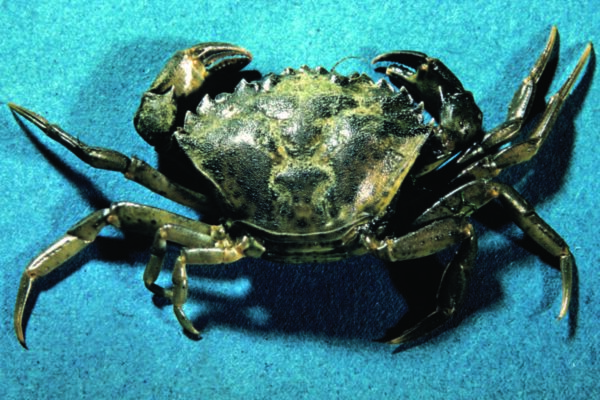
This medium-sized burrowing crab was first reported in the San Francisco Estuary in 1992 and is currently only established in California, although individuals have been reported in several East Coast areas such as the Chesapeake Bay and the Hudson River. Its presence in North America is concerning due to the significant negative impacts experienced after its introduction and spread throughout Europe.



